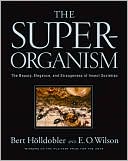Category Books
- Fiction Books & Literature
- Graphic Novels
- Horror
- Mystery & Crime
- Poetry
- Romance Books
- Science Fiction & Fantasy
- Thrillers
- Westerns
- Ages 0-2
- Ages 3-5
- Ages 6-8
- Ages 9-12
- Teens
- Children's Books
- African Americans
- Antiques & Collectibles
- Art, Architecture & Photography
- Bibles & Bible Studies
- Biography
- Business Books
- Christianity
- Computer Books & Technology Books
- Cookbooks, Food & Wine
- Crafts & Hobbies Books
- Education & Teaching
- Engineering
- Entertainment
- Foreign Languages
- Game Books
- Gay & Lesbian
- Health Books, Diet & Fitness Books
- History
- Home & Garden
- Humor Books
- Judaism & Judaica
- Law
- Medical Books
- New Age & Spirituality
- Nonfiction
- Parenting & Family
- Pets
- Philosophy
- Political Books & Current Events Books
- Psychology & Psychotherapy
- Reference
- Religion Books
- Science & Nature
- Self Improvement
- Sex & Relationships
- Social Sciences
- Sports & Adventure
- Study Guides & Test Prep
- Travel
- True Crime
- Weddings
- Women's Studies
The Superorganism: The Beauty, Elegance, and Strangeness of Insect Societies »

Authors: Bert Holldobler, Edward Wilson
ISBN-13: 9780393067040, ISBN-10: 0393067041
Format: Hardcover
Publisher: Norton, W. W. & Company, Inc.
Date Published: November 2008
Edition: (Non-applicable)
Author Biography: Bert Holldobler
Bert Hölldobler is Foundation Professor at Arizona State University and the recipient of numerous awards, including the Pulitzer Prize and the Gottfried Wilhelm Leibniz Prize. He lives in Arizona and Germany.
Regarded as one of the world’s preeminent biologists and naturalists, Edward O. Wilson grew up in south Alabama and the Florida Panhandle, where he spent his boyhood exploring the region’s forests and swamps, collecting snakes, butterflies, and ants—the latter to become his lifelong specialty. The author of more than twenty books, including the Pulitzer Prize-winning The Ants and The Naturalist as well as his first novel Anthill, Wilson, a professor at Harvard, makes his home in Lexington, Massachusetts.
Book Synopsis
The Pulitzer Prize-winning authors of The Ants render the extraordinary lives of the social insects in this visually spectacular volume.
Publishers Weekly
The vast majority of insect species are solitary; only a relatively few orders of ants, bees and wasps are truly "eusocial," living in colonies with only one or a few reproductive females (ensuring all members are related) and workers who collaborate in complex behaviors choreographed by chemical signaling, situational cues and "dances." Following up their Pulitzer-winning tome The Ants, science professors Hölldobler and Wilson propose that, at their most sophisticated, eusocial colonies function in ways analogous to the cells of a single large organism (e.g., a vertebrate), which they term the "Superorganism." Hölldobler and Wilson's investigation has surprising implications for all types of social animals, including humans, as well as for "thinking machines" that use decision-making algorithms. While evolution by natural selection is easy to describe (environment acting on random genetic variations to change biological characteristics), the authors manage the very difficult task of mapping its progress, precisely defining both the sequence of genetic changes and the environmental pressures involved. Formidable but rewarding, this study covers mathematical analysis as well as field data, but in a straightforward manner that guides readers from one remarkable fact or concept to the next, inspiring wonder at the origin of our own societies. 110 color and 100 b&w illus.
Copyright © Reed Business Information, a division of Reed Elsevier Inc. All rights reserved.
Table of Contents
Subjects
 Biology
Biology  Biology - Entomology
Biology - EntomologyScience & Nature
 Nature
Nature  Arthropods - Insects - General
Arthropods - Insects - GeneralScience & Nature
 All Science & Nature
All Science & Nature  Biology & Life Sciences
Biology & Life SciencesScience & Nature
 All Science & Nature
All Science & Nature  Nature
NatureNonfiction
 Science & Nature
Science & Nature  Biology
BiologyNonfiction
 Science & Nature
Science & Nature  Nature
NatureNonfiction
 Science & Nature
Science & Nature  All Science & Nature
All Science & Nature
